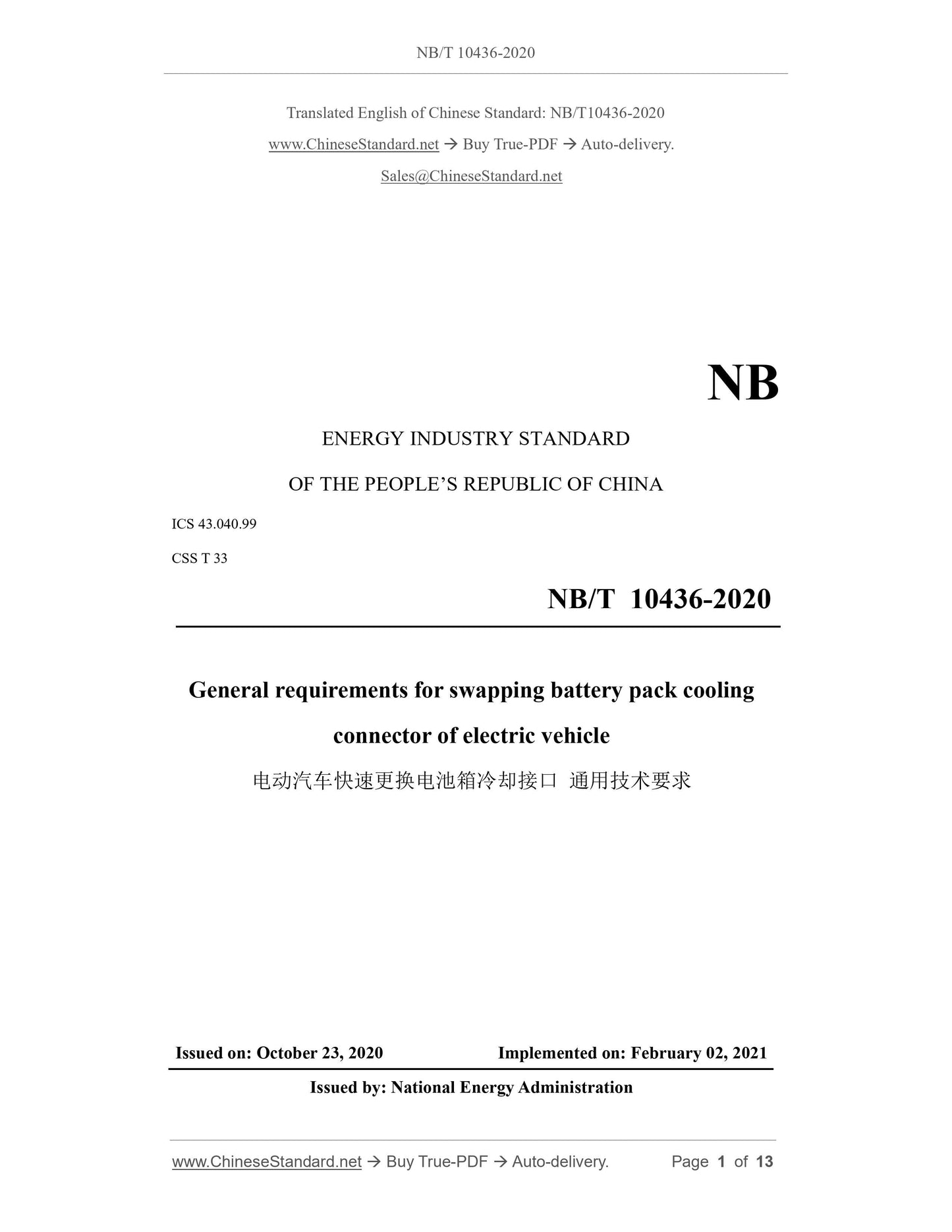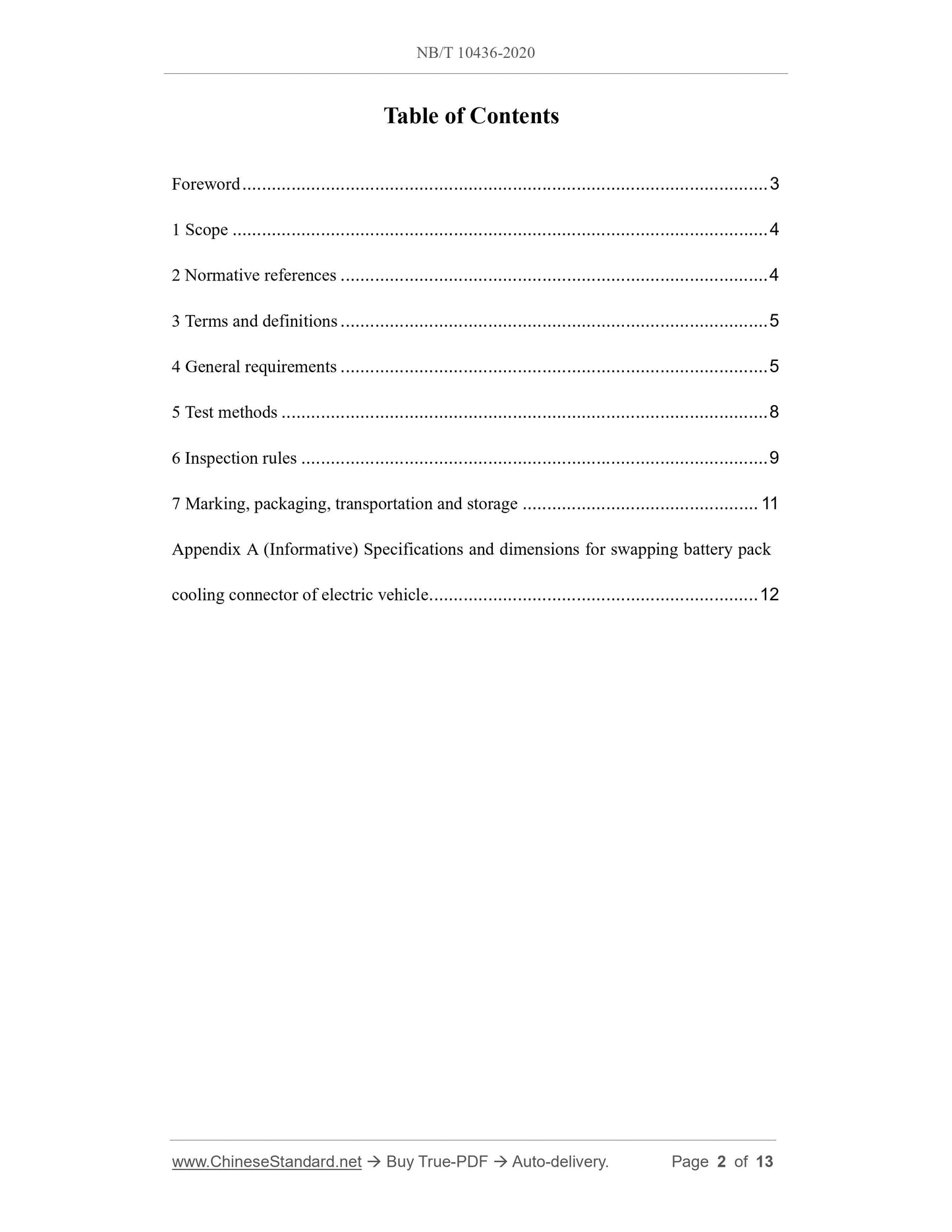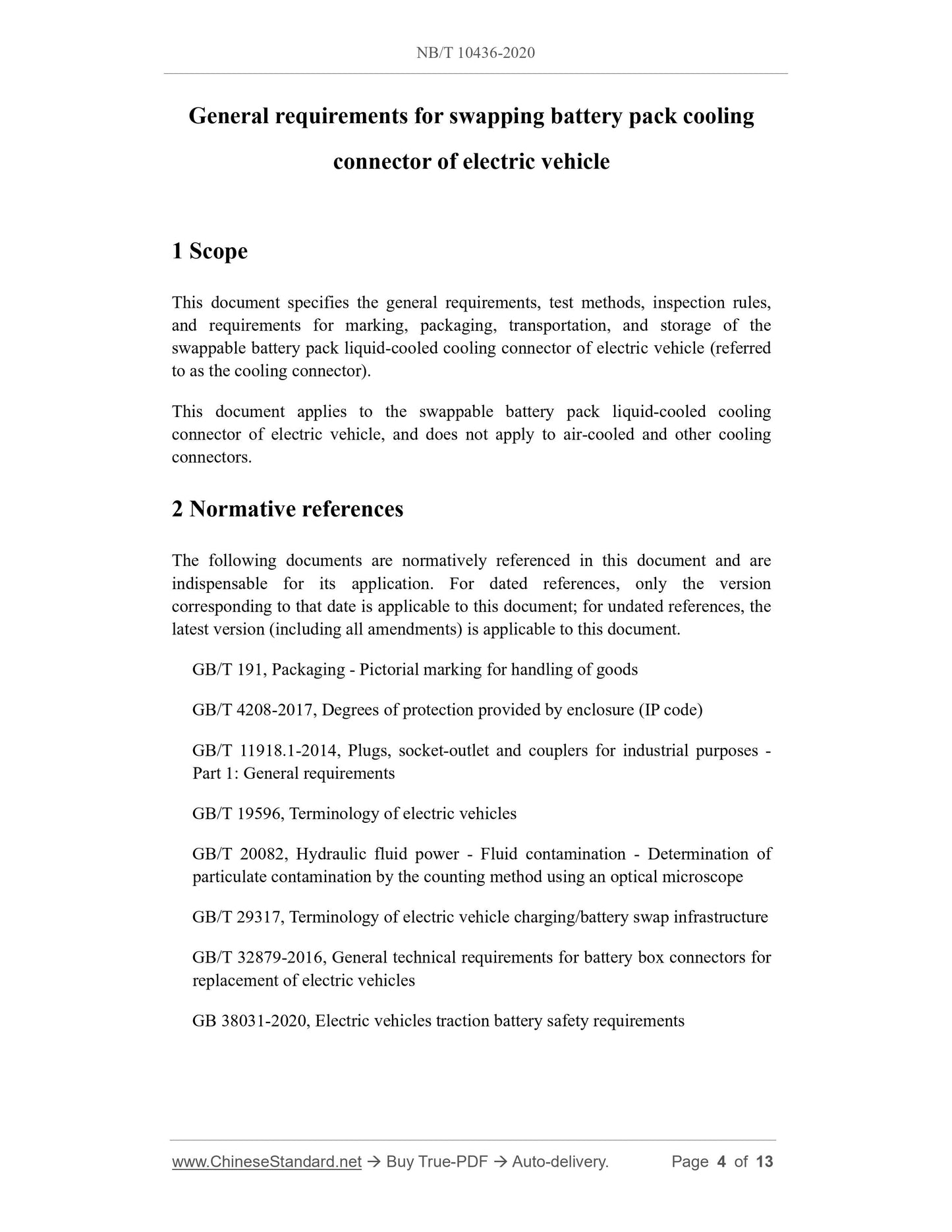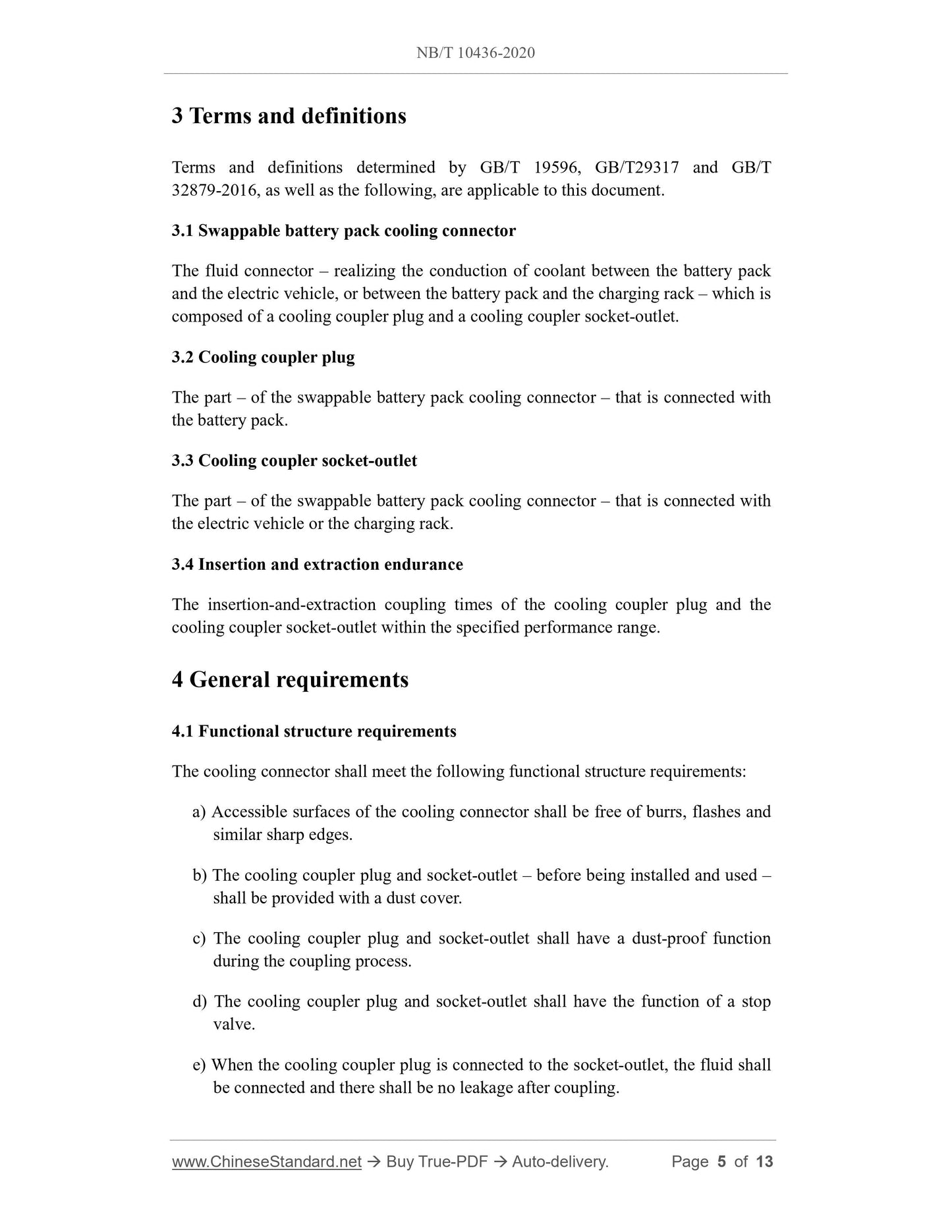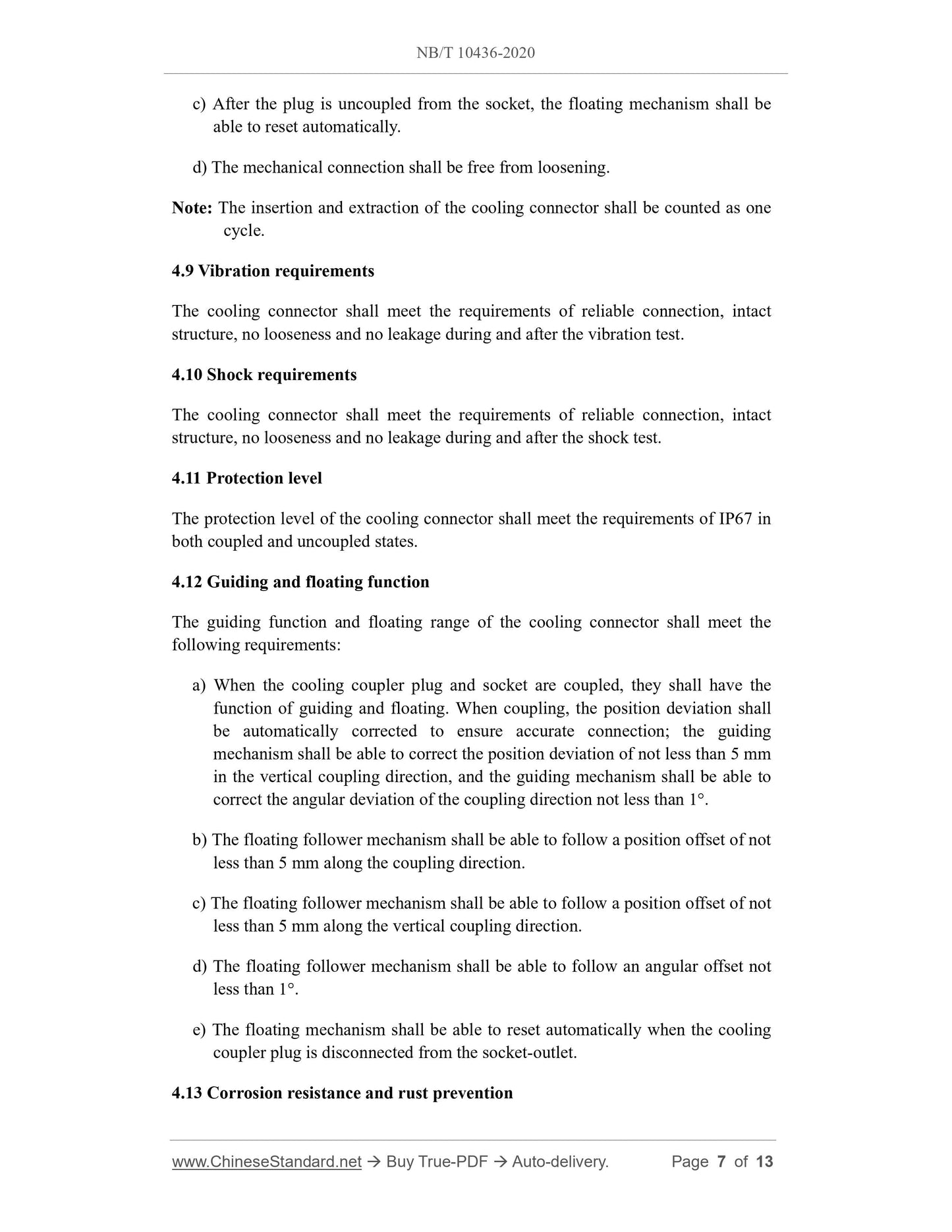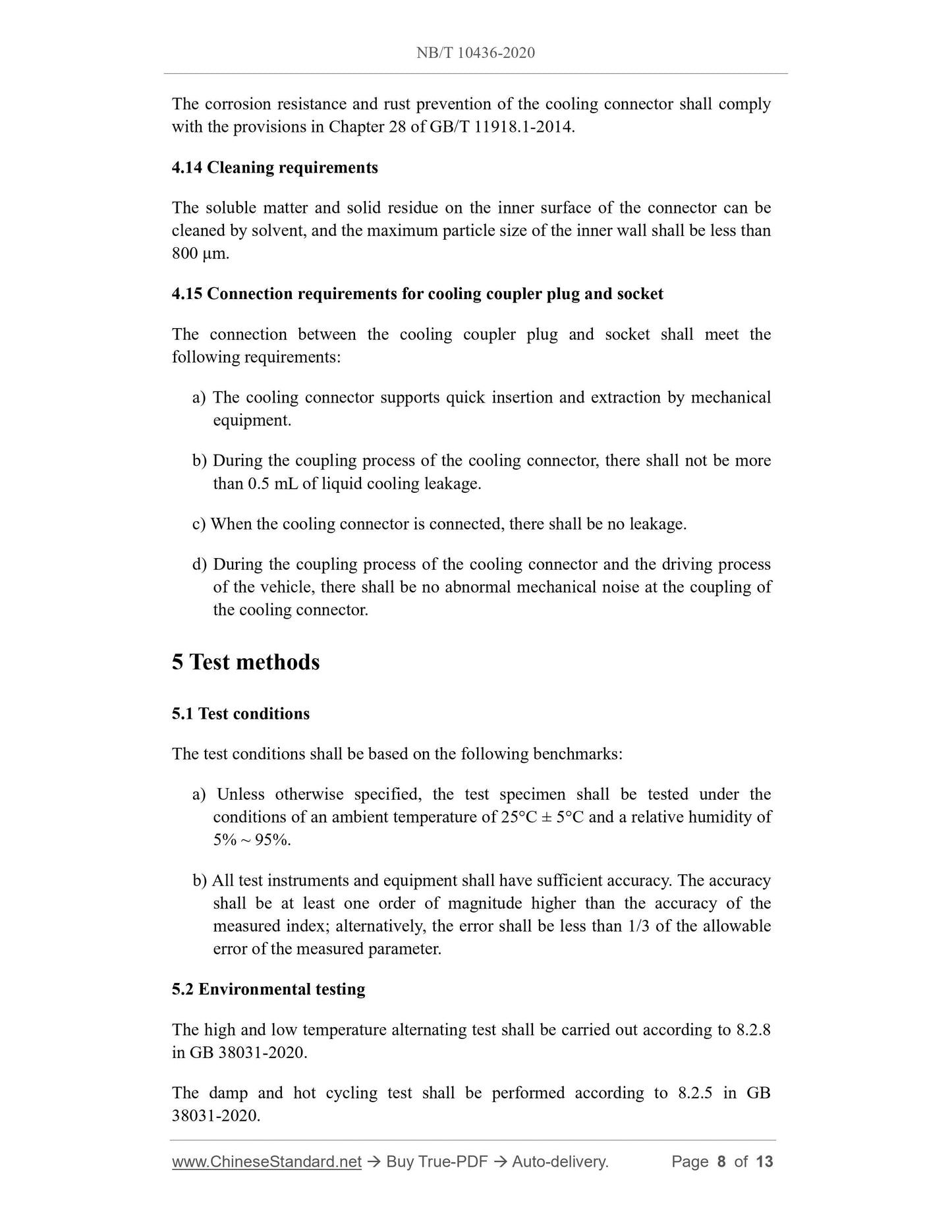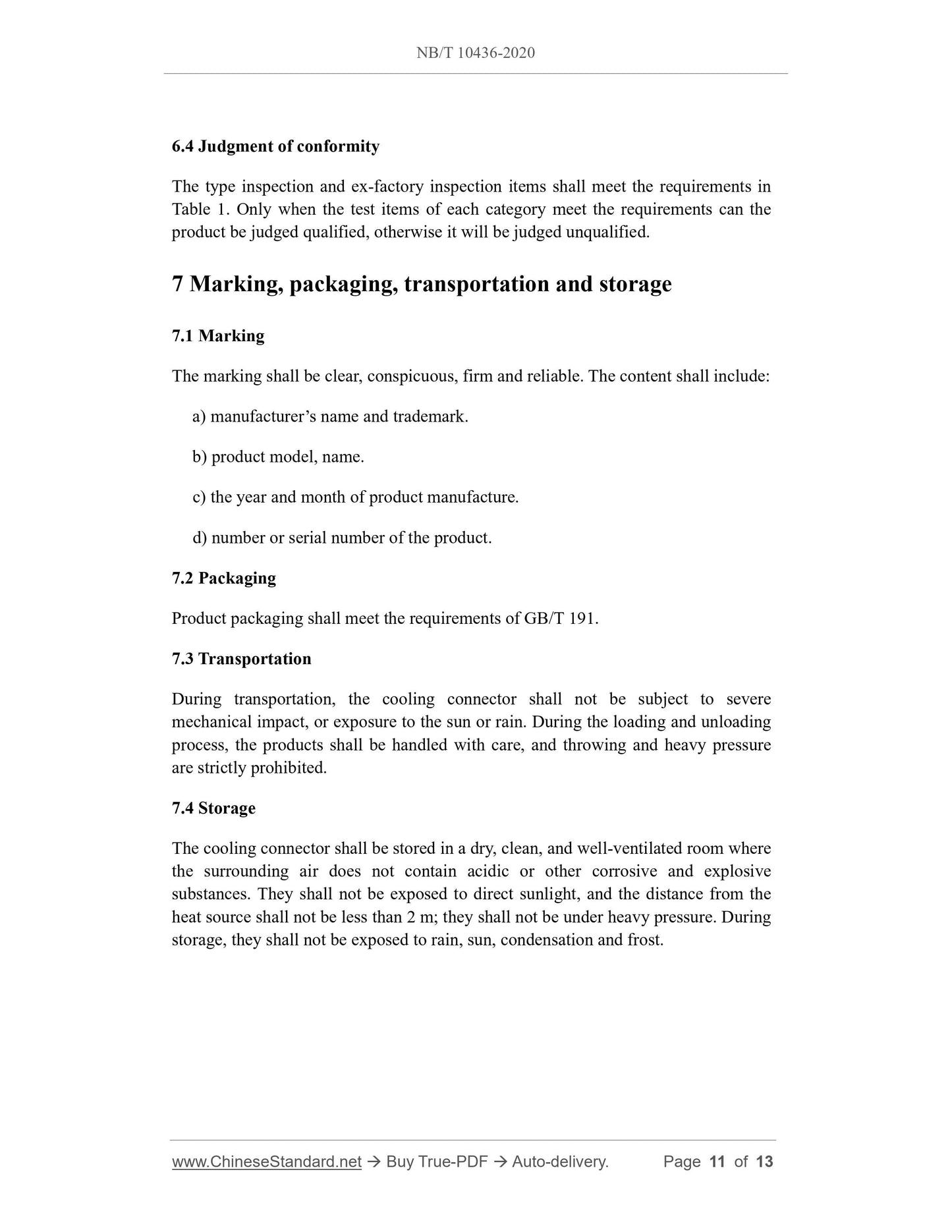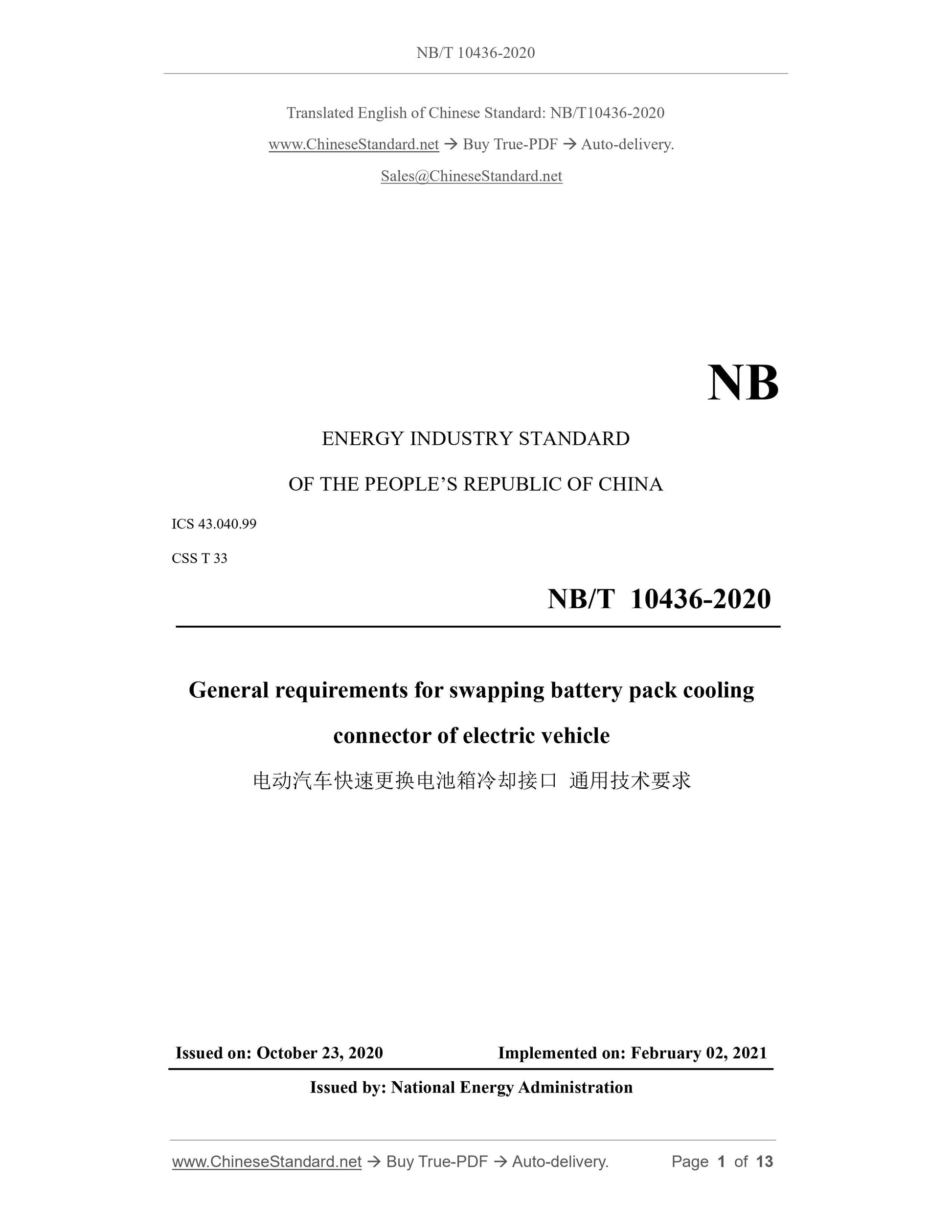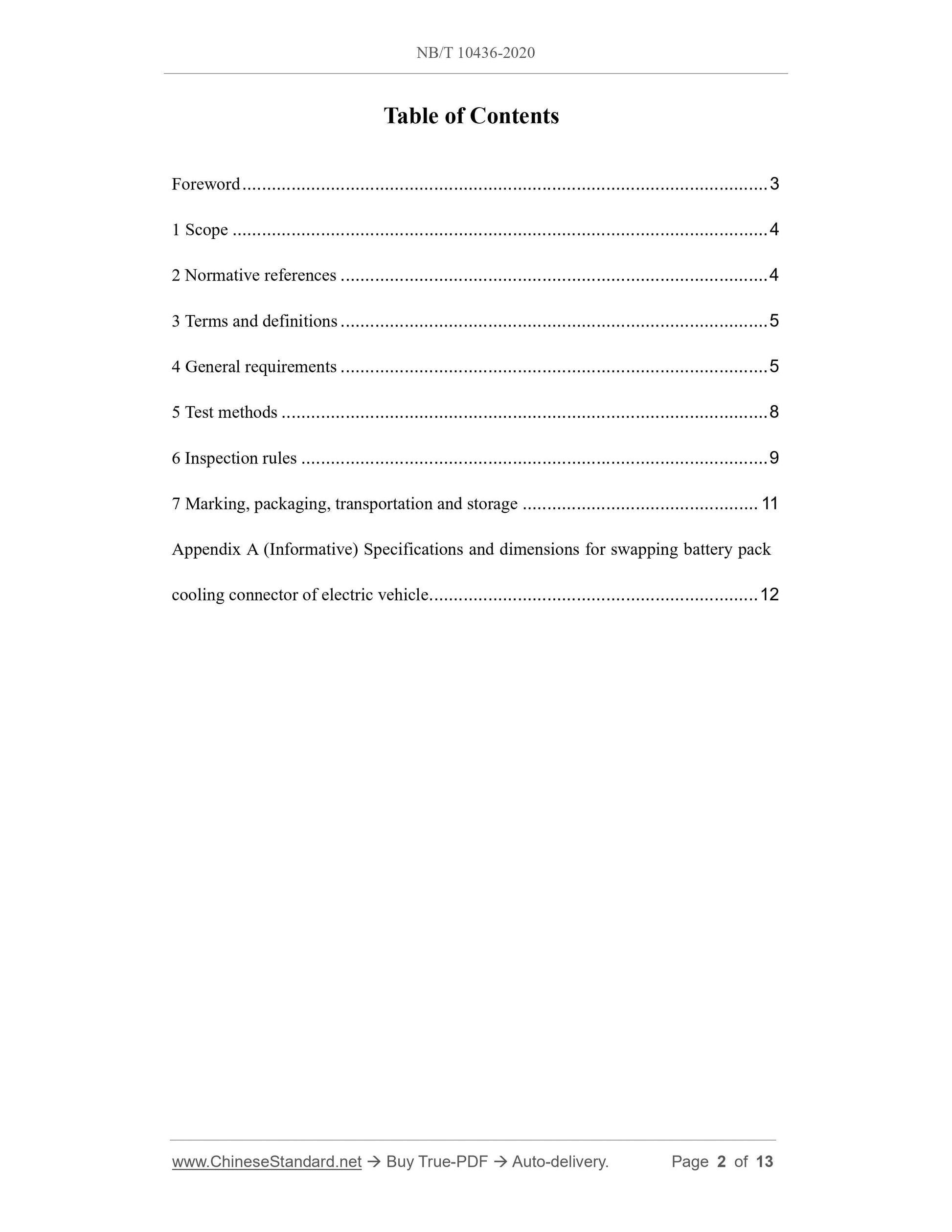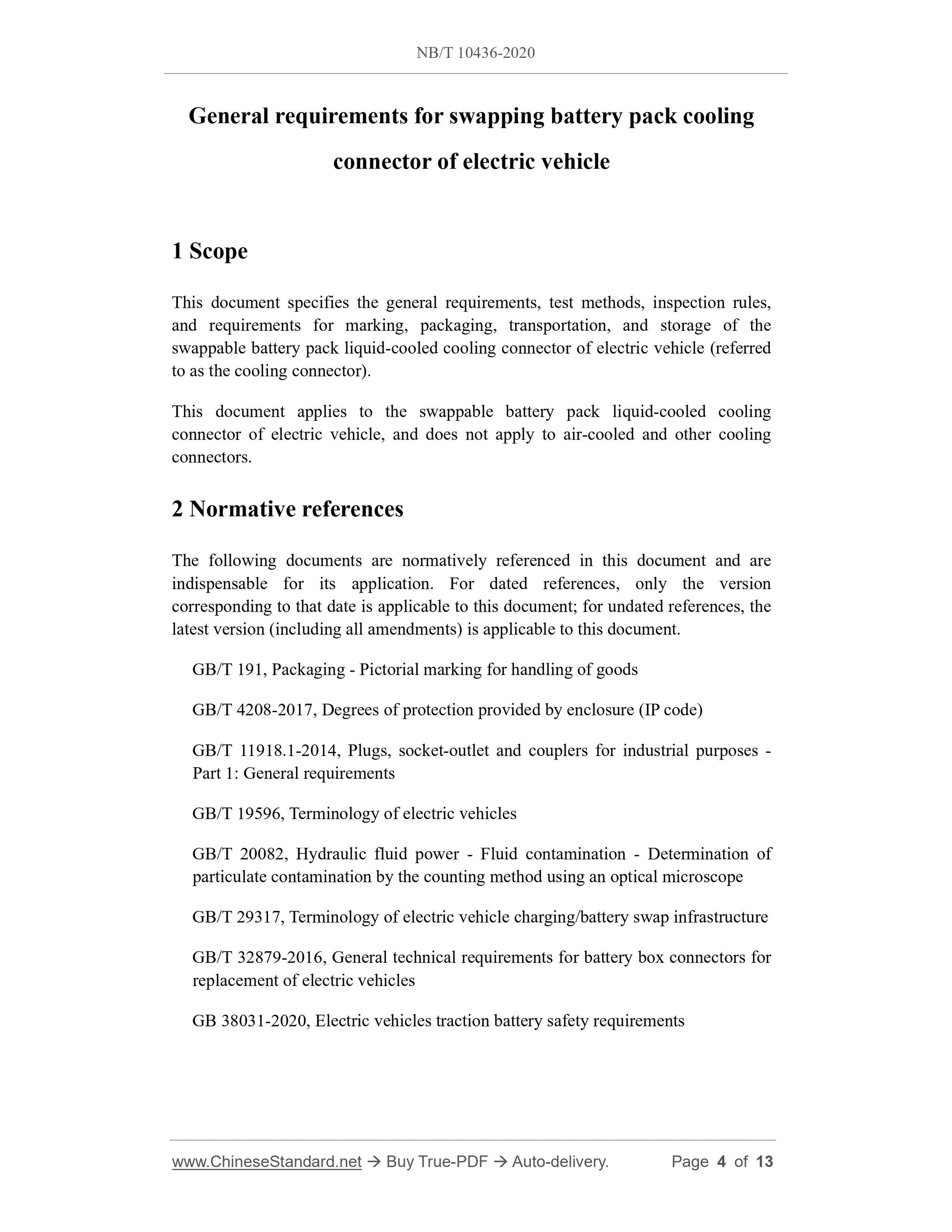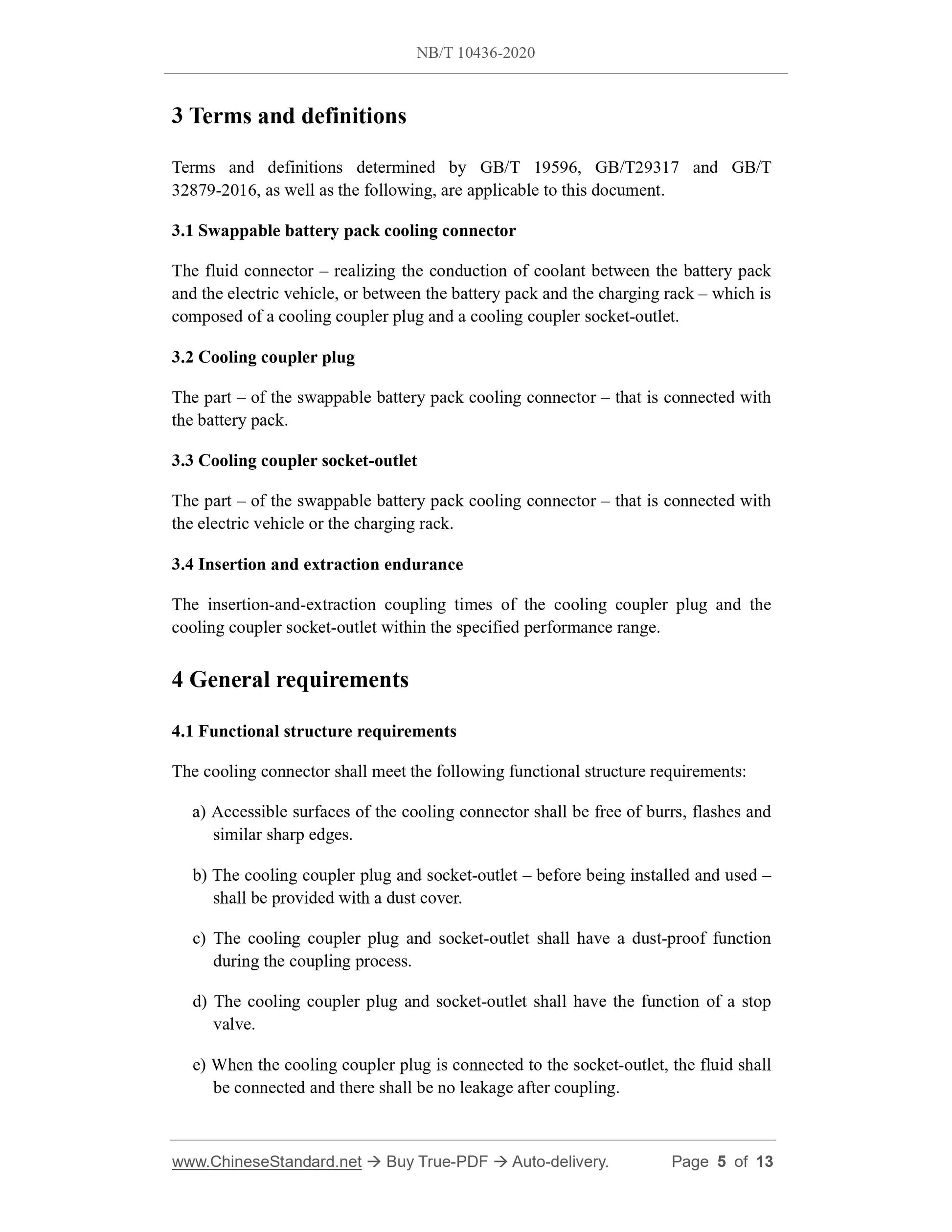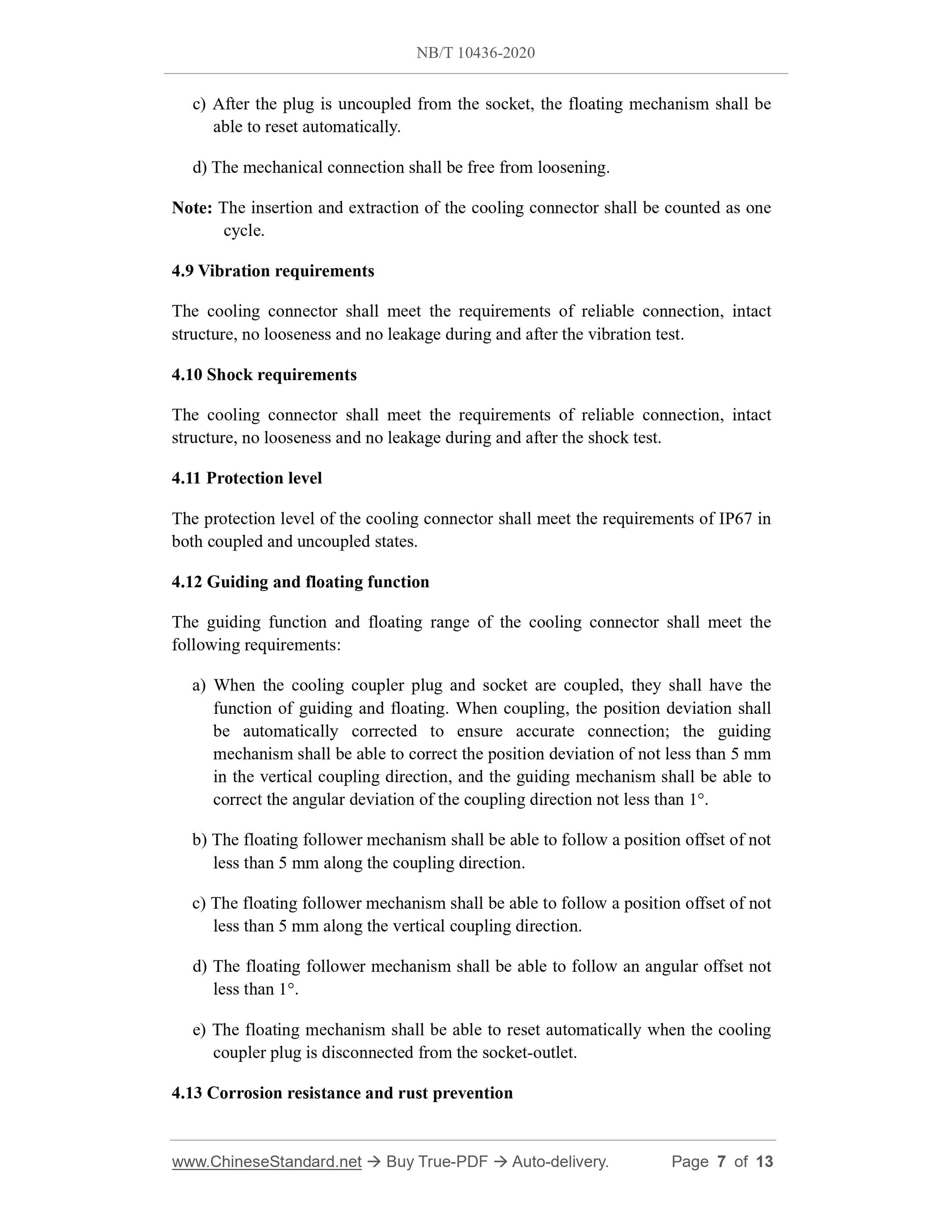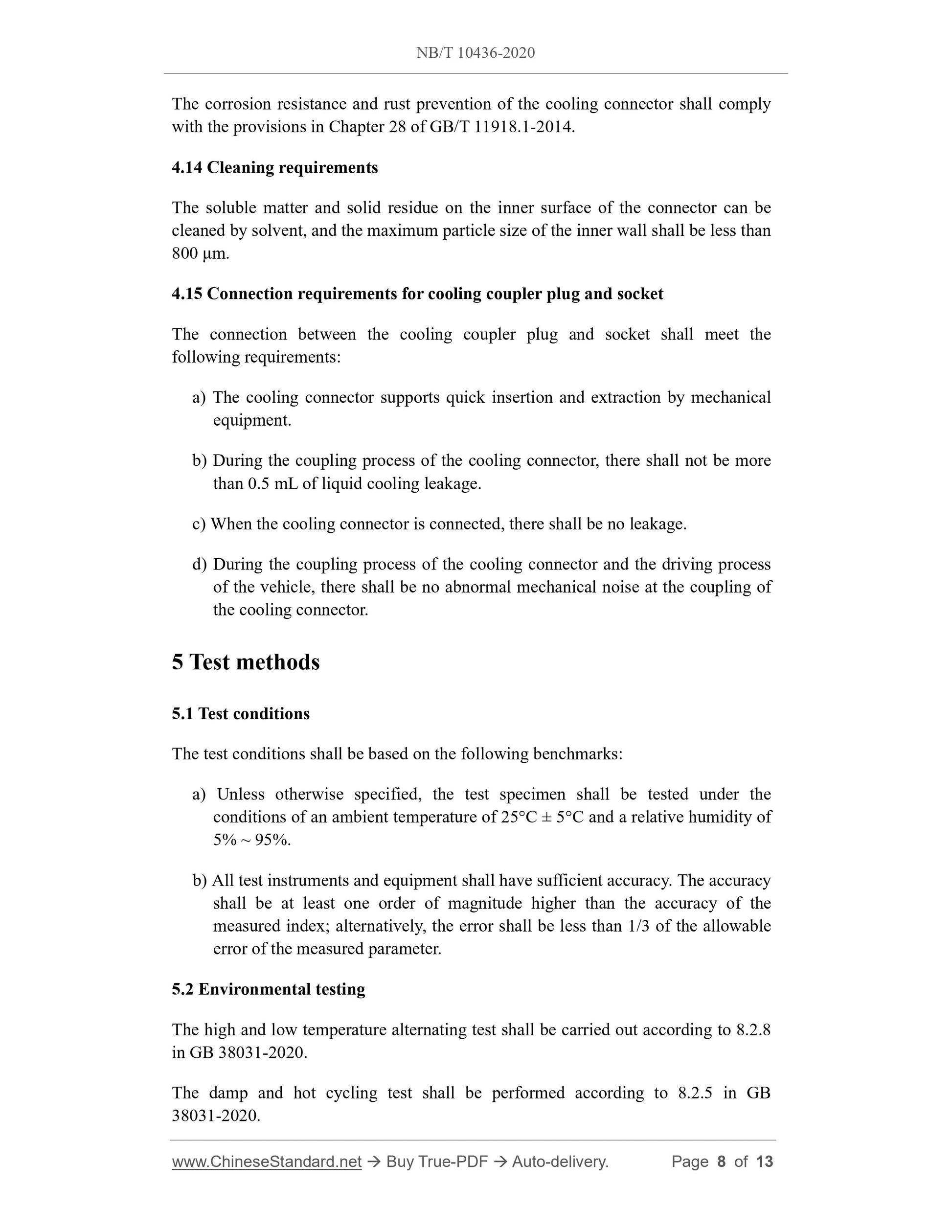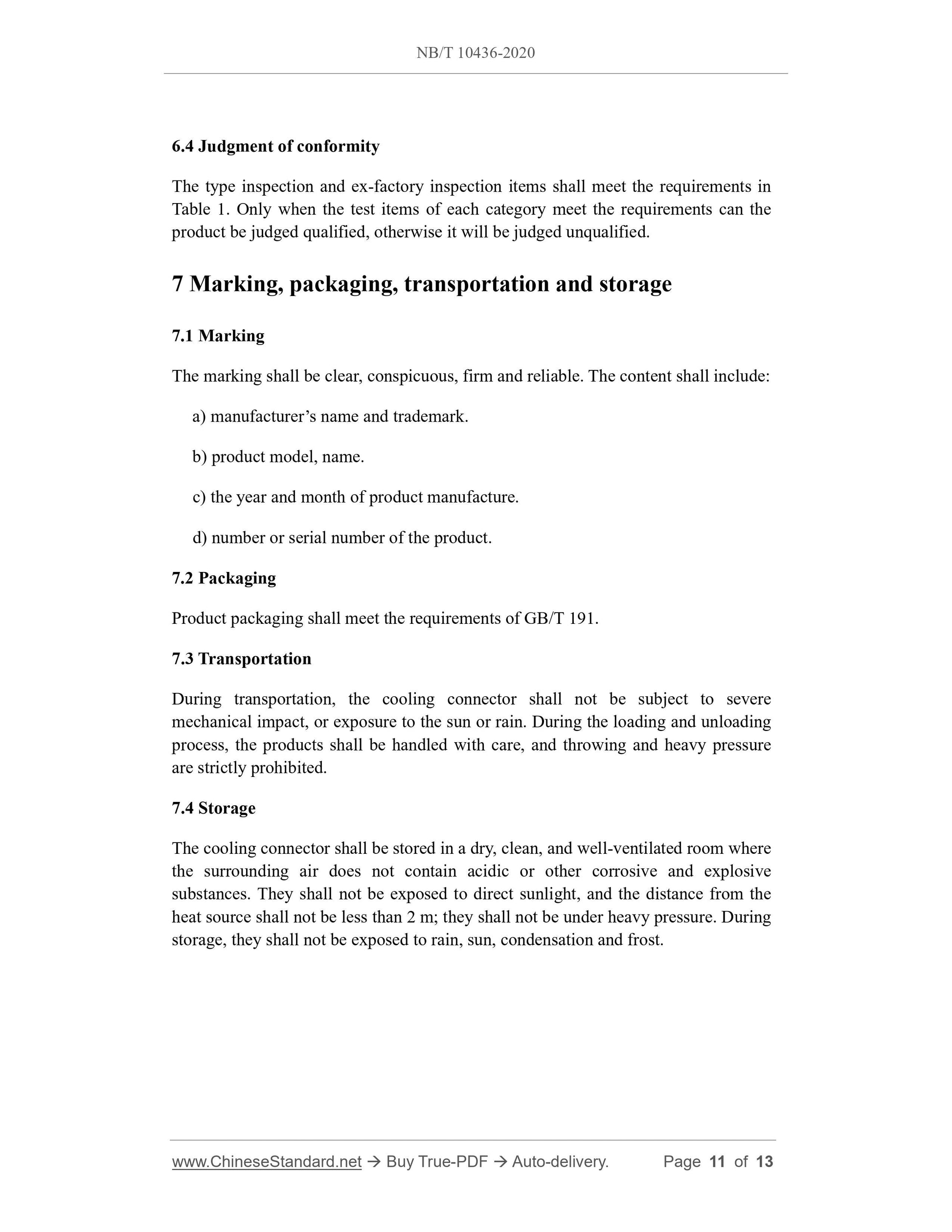1
/
of
7
www.ChineseStandard.us -- Field Test Asia Pte. Ltd.
NB/T 10436-2020 English PDF (NB/T10436-2020)
NB/T 10436-2020 English PDF (NB/T10436-2020)
Regular price
$155.00
Regular price
Sale price
$155.00
Unit price
/
per
Shipping calculated at checkout.
Couldn't load pickup availability
NB/T 10436-2020: General requirements for swapping battery pack cooling connector of electric vehicle
Delivery: 9 seconds. Download (and Email) true-PDF + Invoice.Get Quotation: Click NB/T 10436-2020 (Self-service in 1-minute)
Newer / historical versions: NB/T 10436-2020
Preview True-PDF
Scope
This document specifies the general requirements, test methods, inspection rules,and requirements for marking, packaging, transportation, and storage of the
swappable battery pack liquid-cooled cooling connector of electric vehicle (referred
to as the cooling connector).
This document applies to the swappable battery pack liquid-cooled cooling
connector of electric vehicle, and does not apply to air-cooled and other cooling
connectors.
Basic Data
| Standard ID | NB/T 10436-2020 (NB/T10436-2020) |
| Description (Translated English) | General requirements for swapping battery pack cooling connector of electric vehicle |
| Sector / Industry | Energy Industry Standard (Recommended) |
| Classification of Chinese Standard | T33 |
| Word Count Estimation | 10,142 |
| Date of Issue | 2020-10-23 |
| Date of Implementation | 2021-02-01 |
| Regulation (derived from) | National Energy Administration Announcement No. 5 (2020) |
| Issuing agency(ies) | National Energy Administration |
Share
